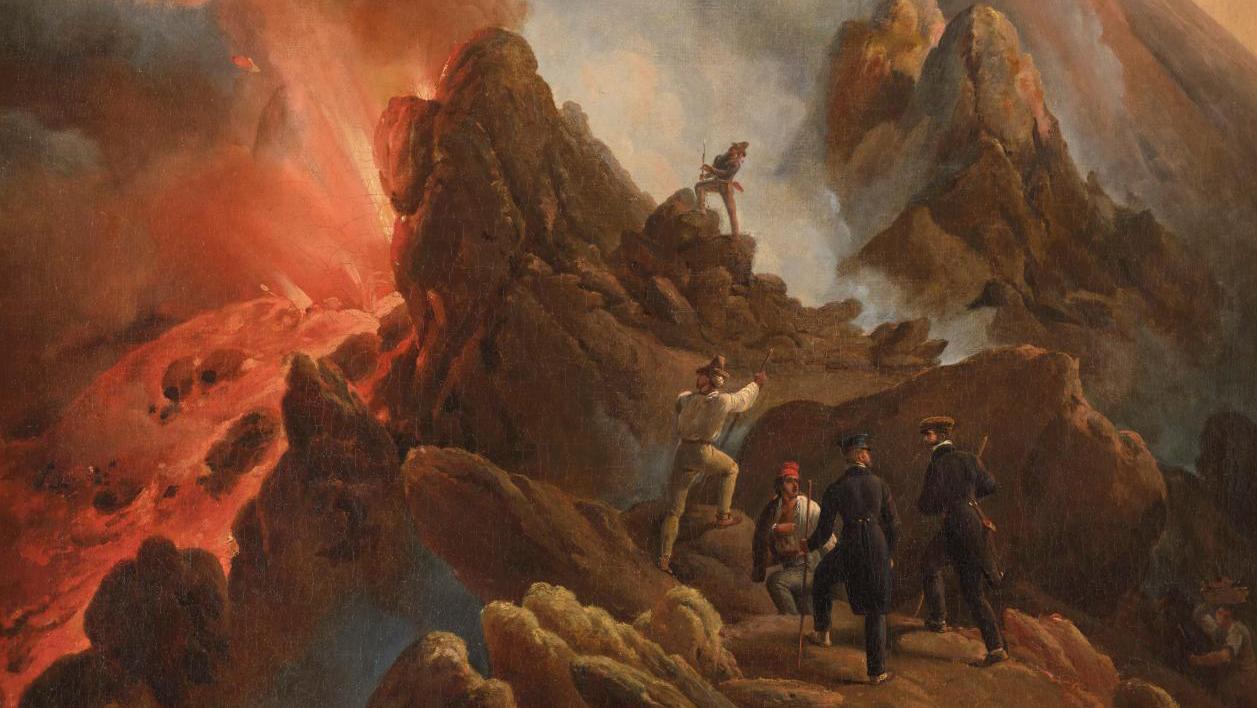The Chateau of Versailles is restoring the official history painter to his rightful place. The heir to a long line of artists and a friend of Géricault, his links with Asia were as enigmatic as they are troubling.
Horace Vernet (1789-1863), The Vesuvius Erupting, the Artist and his Father, oil on canvas, 92 x 72 cm/36.22 x 28.34 in. (detail), private collection.
DR
Horace Vernet ’s family tree is from the pages of an art history book. Born in the Louvre on the night of June 30 to July 1, 1789, the grandson of the great seascape painter Joseph Vernet and draftsman and engraver Moreau le Jeune, son of the horse painter Carle Vernet and nephew of architect Jean-François Chalgrin, Horace Vernet was a man of paradoxes. His abilities were fully revealed over time, partly in Rome , where he became director of the Académie de France at the age of 40 despite never having been a student there. Vernet owed the position partly to the political yet poetic depictions of his North African travels. During his five enthusiastic stays there, he was torn between his duty to record a war of conquest and sing the praises of the d'Orléans family, illustrating and legitimizing their colonial ventures, and a genuine fascination for Algeria and its culture. Yet this was not a contradiction for a man of his generation. Vernet was above all an official artist. He started out by painting Napoleonic victories at a time when they could be counted on the fingers of one hand, and defended Paris from the allies at the Clichy barricade on March 30, 1814, an episode for which the emperor decorated him with the Légion d’honneur in December of the same year and that he depicted in a famous painting several years later (Paris, the Louvre). Vernet was no less a staunch supporter of the French King Louis-Philippe, for whom he did a series of propaganda paintings, starting with one showing the king and his five sons leaving the Chateau of Versailles through the main gate after reviewing troops in the courtyard on June 10,…
com.dsi.gazette.Article : 48157
This content is for subscribers only
You still have 85% left to read.
